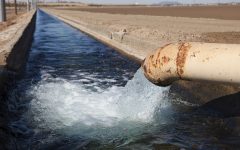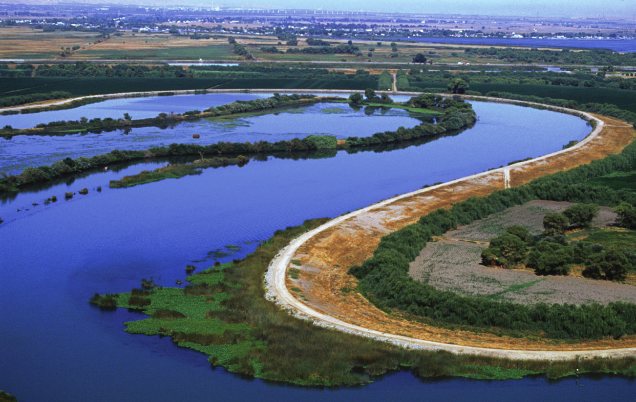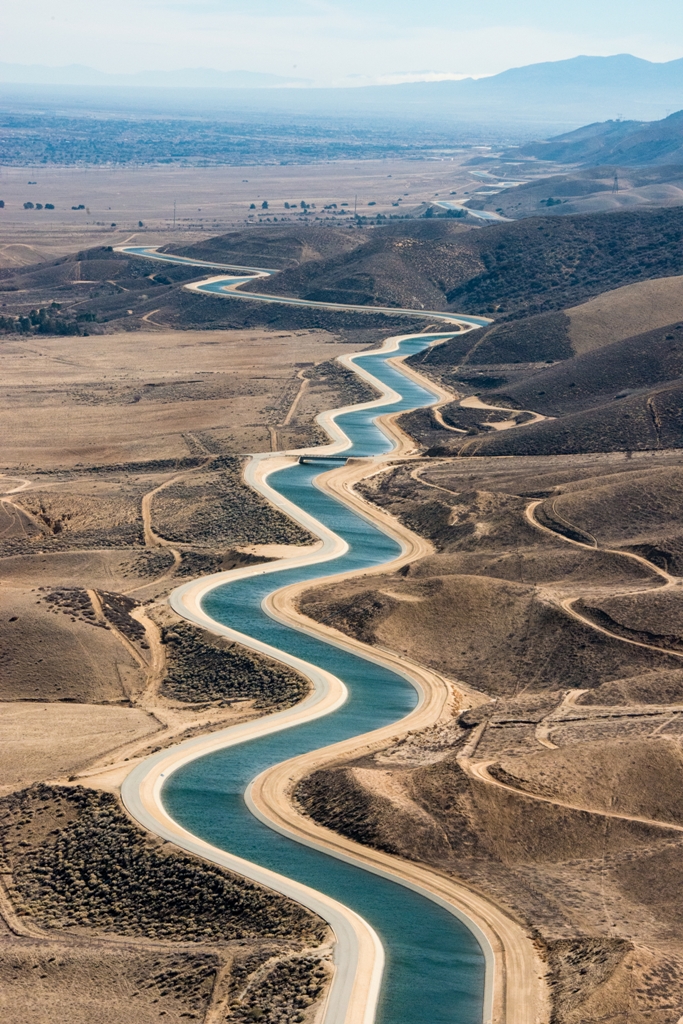
The South Lawn at the White House. (Photo: Public Domain)
Ringside: Quantifying the Upside of More Lawns
The business of government should not be to mandate what we grow on our property or to ration our water use
By Edward Ring, January 22, 2025 2:47 pm
 A respected advocate for farming interests in California once explained to me that every acre of lawn requires 5 acre feet of water per year. The unsubtle implication was that the more lawn we kill, the less water we waste. But this is zero sum thinking. How much lawn are we talking about, and how much water?
A respected advocate for farming interests in California once explained to me that every acre of lawn requires 5 acre feet of water per year. The unsubtle implication was that the more lawn we kill, the less water we waste. But this is zero sum thinking. How much lawn are we talking about, and how much water?
In August 2023, the editorial board of the Los Angeles Times offered their unequivocal take on lawns with a column titled “Say Goodbye to Grass.” They claimed that the Metropolitan Water District of Southern California has 218,000 acres of turf in their service area, and 23 percent of that is deemed “nonfunctional.”
Let’s suppose that 50 percent of Met’s sprawling service area is within Los Angeles County. That would mean that 109,000 acres of turf (“functional” and “nonfunctional”) are requiring 545,000 acre feet of water per year to keep green. The horror.
But is any lawn “nonfunctional?” A study conducted at the University of Minnesota found that lawns reduce temperature by between 7-14 degrees and that “lawns and other landscape plants could reduce total U.S. air conditioning energy requirements by 25 percent.”
Imagine if the energy savings from planting (or preserving) more lawn and trees were truly that significant. A typical American home uses 2,500 kilowatt-hours per year on air conditioning. That’s probably the low number for Los Angeles County, where there are 3.3 million households. If electricity consumption for air conditioning in Los Angeles County, using these assumptions, was cut by 25 percent, that would save 2,063 gigawatt-hours per year.
To add some perspective to that calculation, at 4 kilowatt-hours per cubic meter, one gigawatt-hour will desalinate 285 acre feet of water, meaning that 2,063 gigawatt-hours would desalinate 412,500 acre feet of water per year. That’s enough to water 82,500 acres even at a lavish 5 acre feet per acre application. And that, to finish the thought, is equivalent to 76 percent of all of the water guzzling lawn acreage in Los Angeles County.
Lawns don’t just lower the temperature, they raise the ambient humidity. More lawn, and more trees, ought to be part of our strategy to mitigate fire risk. Unlike PFAS laden artificial turf that can get hotter than concrete, or water-sipping palm trees that launch long-range balls of fire during wind driven firestorms, well-hydrated temperate landscaping counters the urban heat island effect and increases humidity.
The biggest mistake farmers and urban more-water activists can make is to succumb to the divide and conquer strategy so effectively waged by California’s scarcity lobby. Constructing desalination plants could be paid for by simply canceling SB 1157, a water rationing annoyance that will cost an estimated $7 billion, saving about 400,000 acre feet of water per year, while turning otherwise lush urban environments into micromanaged deserts.
There is an attractive symmetry to all of these numbers, albeit politically subversive to the powers that currently run the state. The presence of lawns in Los Angeles County might actually be saving enough electricity to desalinate the same amount of water, 400,000 acre feet per year, that SB 1157 aims to conserve; nearly enough water to irrigate the lawns themselves. Equally symmetrical is the fact that the $7B cost to implement SB 1157 is enough money to construct plants with a total capacity to desalinate that same 400,000 acre feet.
So much for “nonfunctional turf.” If the issue is fertilizer and pesticide and herbicide runoff, then we may focus our regulatory energies on restricting or banning their use. We don’t need our lawns to sport a neon shade of green. Lawn will still grow without all those supplements. And if open turf laden areas are truly unusable for sports or lounging, then by all means, plant water guzzling flowers for the bee population. But the business of government should not be to mandate what we grow on our property, nor is it to ration our water use. A more appropriate role for our state and local governments is to invest in more water supply infrastructure. Repealing SB 1157 and redirecting the funds that it would have cost into supply projects would be a good start.
Farmers can make common cause with urban activists to fight California’s scarcity agenda. They can work together to abolish the Coastal Commission and evict the scarcity activists who control the California Dept. of Fish and Wildlife. They can work together to force the State Water Resources Control Board to invest in projects that will actually help delta species instead of just leaving more water in the rivers. They can fight for productive alternatives – upgraded treatment plants that no longer discharge nitrogen into the estuaries, a higher limit on bass fishing, and expanded, more innovative hatcheries, nurseries and restored habitat for salmon and smelt.
At the same time, if California’s urban and rural water agencies united behind a common infrastructure agenda, they might finally pressure the state into water supply projects that will make a difference – fish friendly delta diversions, extending the Folsom South Canal all the way to the Clifton Court Forebay, a legal framework and permanently streamlined permit process for farmers to harvest floodwater, and desalination at scale, to name but a few.
Lawns are synonymous with resilience because the surplus they consume, and the expanded distribution infrastructure they require, is then always available for more urgent needs during a crisis. Lawns are also beautiful, cooling, hydrating assets that mitigate the impact of asphalt. The defense of lawns is bigger than the blades of grass that make them. It is to defend a healthy choice. It is to embrace possibilities instead of constraints. It is to reject scarcity in favor of a life with abundance.
- Ringside: CA GOP Just Blew $46 Million for Nothing – Here’s How They Can Avoid Repeating That Mistake in 2026 - December 24, 2025
- Ringside: Will the Delta Pumps Operate at Capacity this Winter? - December 18, 2025
- Ringside: Will Advocates for More Water Supply Projects Find Unity? - December 11, 2025





The last sentence in this article sums up the Democrat party’s philosophy. Turning abundance into shortages. Death over life.
Great info!
So a beautiful green lawn IS the best green policy!
Memo to all the green energy activists, lawns are good for you and good for the environment.
How many of us love lush green lawns but don’t like having to maintain them?